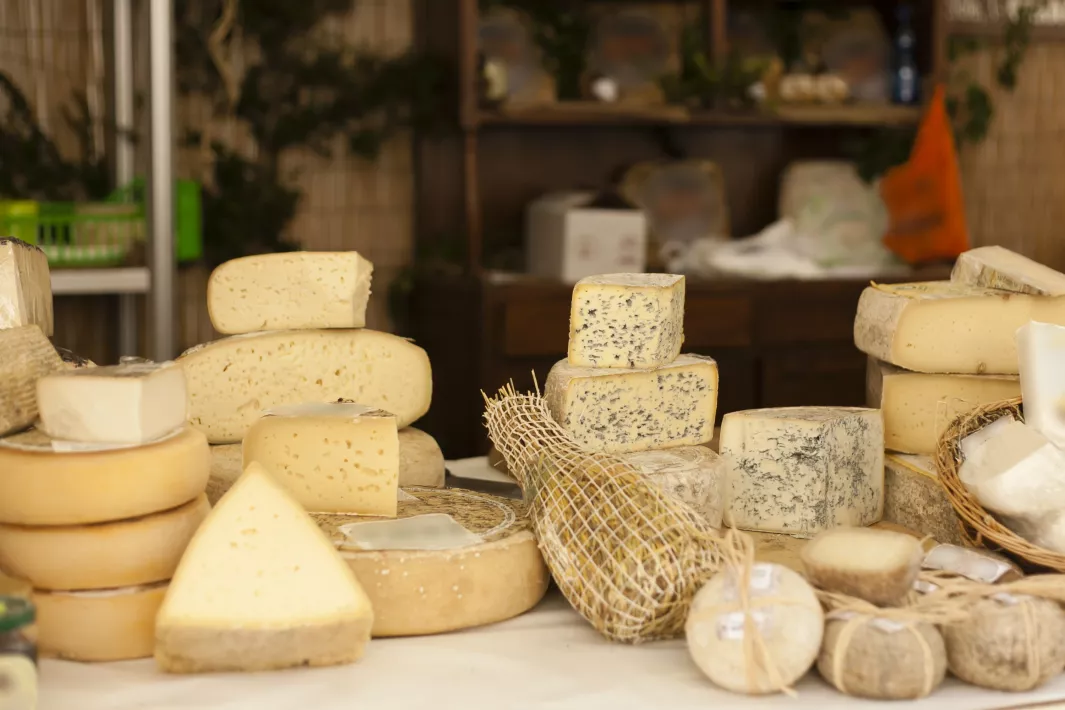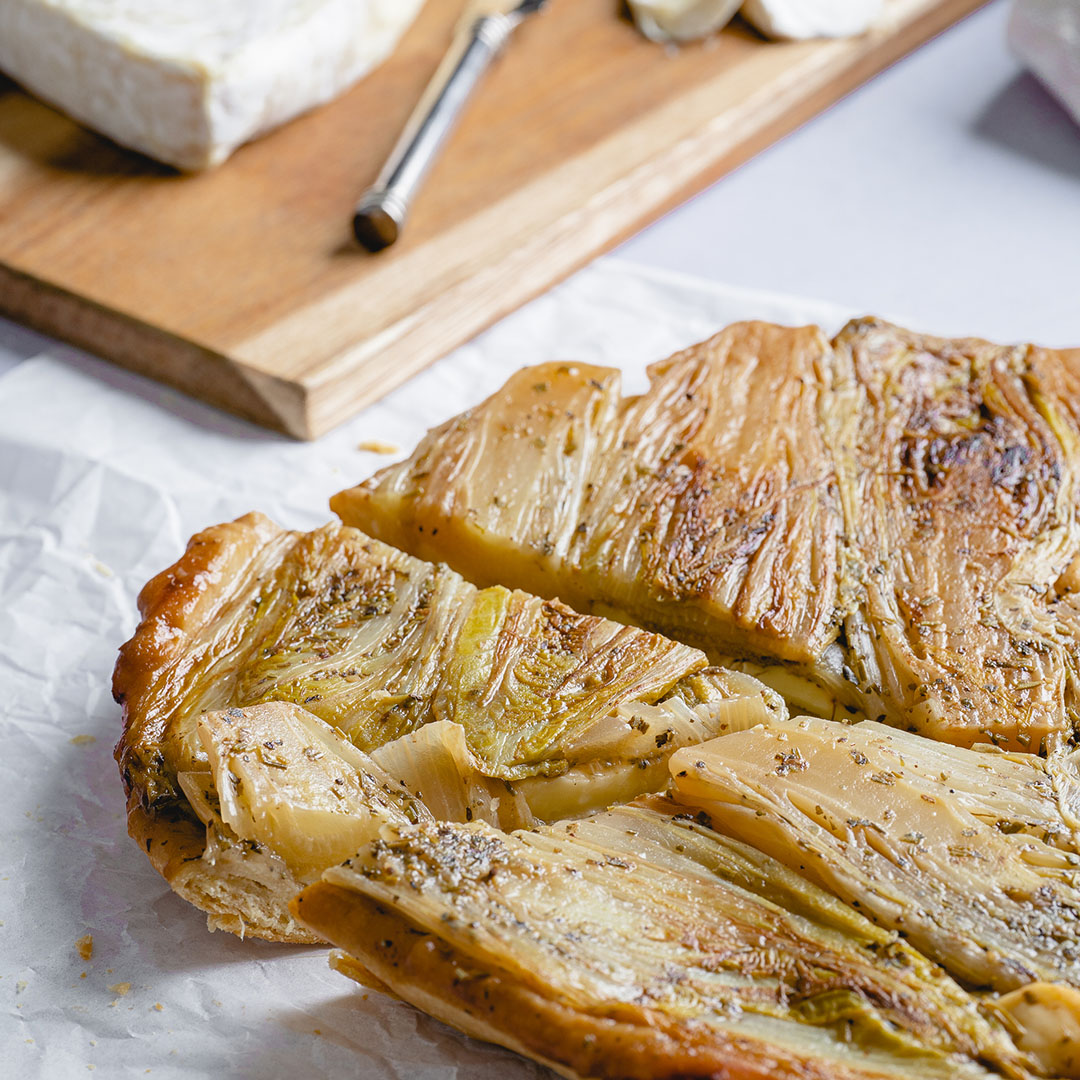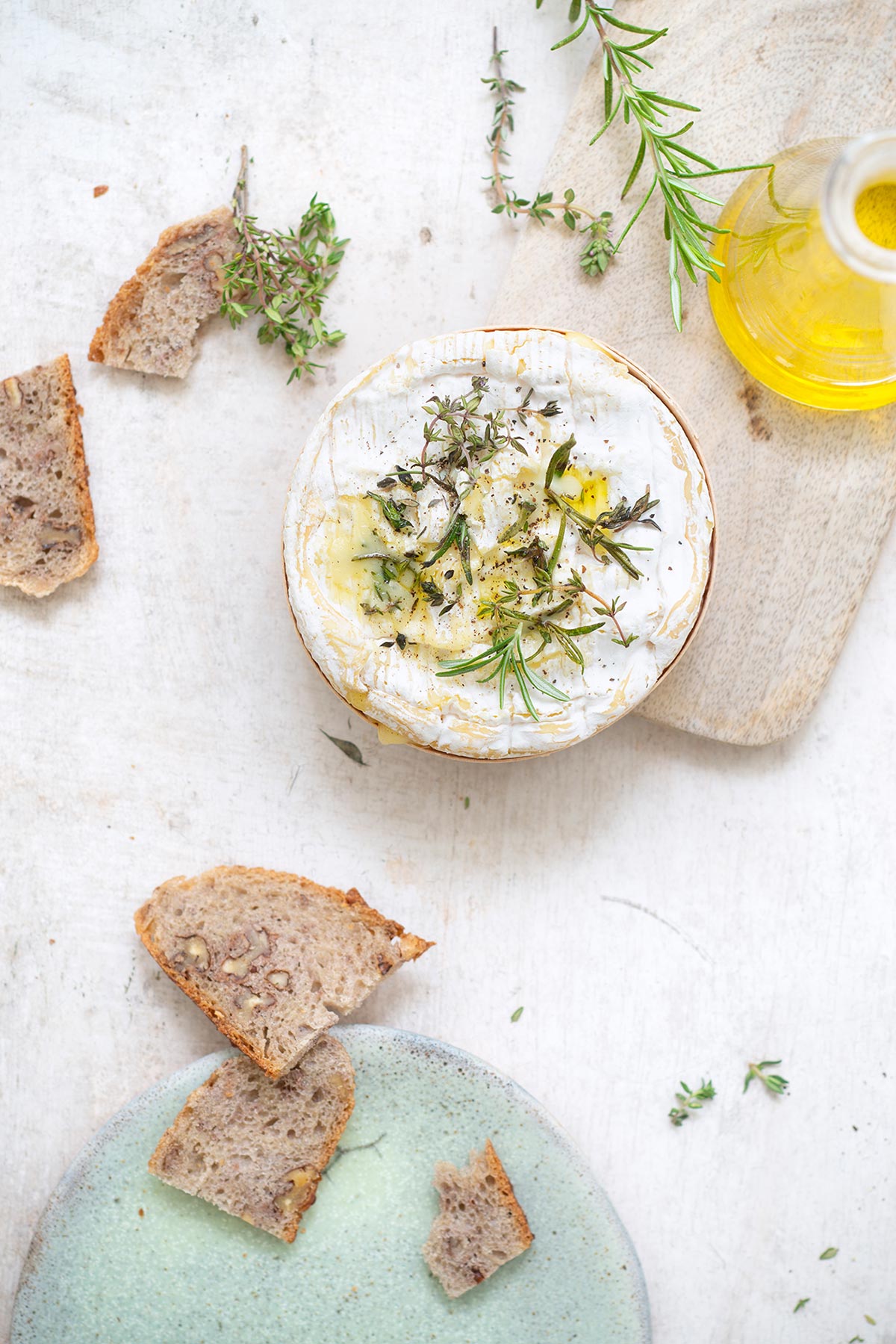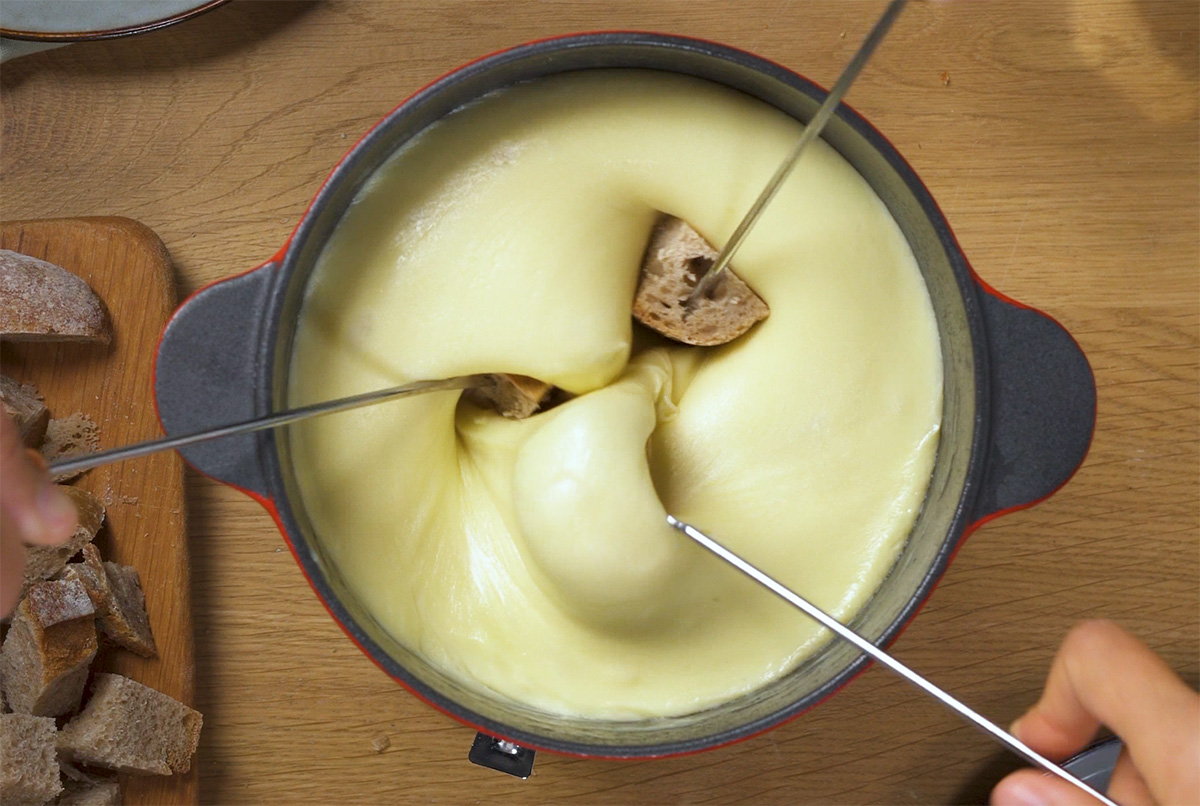Brie, camembert, comte, raclette: the world of French cheese is a vast and exciting one! Discover the most popular French cheeses and how to eat them.

For cheese lovers, there’s simply no better destination in the world than France, which is home to more than 1,200 varieties of the good stuff! A combination of terroir (environmental factors like climate, soil, and topography that influence a food product’s qualities) and artisanal savoir-faire ensure each French cheese has its own unique flavour, texture, and history.
That being so, choosing the right French cheese to complement a dish or complete a cheeseboard can feel like an intimidating task. If you’ve ever frozen with indecision in the cheese aisle, then you’ve come to the right place, as we’ve put together a guide for getting to know some of the most beloved French cheeses and the best ways to enjoy them!
Soft and creamy cheeses
Brie
Brie is a luscious cow’s-milk cheese, named after the region in northern France where it originates from. It’s recognisable thanks to its velvety white rind and creamy interior. Brie has a mild, buttery flavour that makes it quite versatile, and many experts recommend eating it with the rind on to enhance the cheese’s slightly tangy, lactic flavour. Brie is usually eaten at room temperature (remove it from the refrigerator at least 30 minutes before serving), and pairs well with sourdough, walnuts, or green apple. It can also be baked, providing a comforting treat when served warm.
Camembert
Sometimes confused with Brie due to its bloomy exterior, Camembert is a soft-rind cheese from Normandy with more of a rustic flavour than its cousin. This creamy cheese gives off a potent aroma, with earthy notes that call to mind mushrooms and hazelnut. A round of camembert is typically cut into triangles and served at room temperature with nuts or fruit, such as figs or fresh grapes. During warmer months, consider baking it in the oven to pair with toasted walnut bread.
Raclette
This semi-hard cheese from the French Alps boasts an aromatic flavour that balances salty, sweet, and nutty notes. As it melts, raclette becomes soft and spreadable, and it’s in this form that the cheese is particularly appreciated. In fact, melted raclette is so celebrated it even has its own kitchen appliance dedicated to it! A Raclette machine features individual trays that hold slices of the cheese, which are placed under a heated grill to melt it. It’s then scraped over boiled potatoes, ham or cured meats, and cornichons.
Hard cheeses
Comté
One of France’s most popular cheeses, comté (from the region Franche-Comté) is a hard, sharp cheese with a complex fruity, nutty flavour. As it ages, protein crystals that are often mistaken for salt form within it, providing it with a unique texture. Comté features heavily on French cheese boards, however it also works well on toasted sandwiches or grated over soups and pasta.
Mimolette
This bright orange cheese with its dry, brittle texture hails from the northern city of Lille. It can be consumed at various stages of ageing, with younger versions resembling smooth Cheddar, while the more popular “extra-old” version has a sharpness not unlike Parmesan but with more of a nutty aroma. Mimolette can be purchased by the block to grate over warm dishes or salads, or found in slices for sandwiches or burgers.
Emmental
With its pale yellow colour, smooth texture, and signature holes, Emmental is an appealing cheese from the Savoy region. This mild, fruity cheese has a sharp aroma but a surprisingly mellow, buttery flavour. Thanks to its melting properties, Emmental is an excellent choice for fondue, gratins, casseroles, or even toasted sandwiches.
Sheep cheese
Roquefort
Due to its popularity amongst royalty throughout history, Roquefort is often hailed the “King of Cheese”. Made using sheep’s milk, this blue-veined cheese from the Occitanie region in the south of France has a pungent scent and bold, slightly bitter flavour. Roquefort is often savoured at room temperature and pairs well with fresh fruit like figs, pears, and stone fruits, as well as walnuts, making it an excellent choice for salads. In addition, the bold, salty flavour is particularly suited to meat dishes.
Looking for more inspiration?
Discover even more delicious French cheeses and recipes for creating the ideal cheese-driven dishes via our dedicated Cheese tag!





















